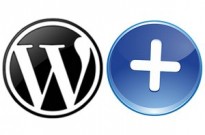 Many are occasionally guilty of taking WordPress for granted, and you might probably admit to the same weakness at times. But in moments of frustration we should remind ourselves that we are using a completely free, open source content management system, and that we can take part in improving it for future versions.
Many are occasionally guilty of taking WordPress for granted, and you might probably admit to the same weakness at times. But in moments of frustration we should remind ourselves that we are using a completely free, open source content management system, and that we can take part in improving it for future versions.
However, suggesting improvements is not the only way you can help in making a better WordPress for all of us – plugin developers are constantly toiling to plug the gaps where our favorite content management system falls short. You will probably find at least one solution to a common frustration of yours in this list. Enjoy!
1. Advanced Text/CSS Editing
If you’ve never found yourself frustrated by WordPress’ text editor, you probably haven’t used it much.
The editor is actually based on an open source piece of software called TinyMCE. For reasons unbeknownst to me, some of the most useful features are saved for the advanced version of the editor, which does not come bundled with WordPress as standard.
So head over to the TinyMCE Advanced plugin page at the WordPress repository and download it for all of your sites. You’ll soon appreciate its many useful features, such as table creation, div editing and easy access to CSS styles.

2. Quick Permalinks
Setting up permalinks is usually one of the first things a WordPress user does when starting a new site.

There is just one problem (that you may or may not be aware of) – in the past, setting permalinks to the post name (which is a favorite of almost any blog you care to look at) can slow down the site load speed.
The cause had something to do with the way in which WordPress recognizes pages and posts – the reason isn’t really important. What is important is the load time of your site – any web developer worth his or her salt knows that load time is vital to the success of a website.
So how can you ensure that setting up post name permalinks does not slow down your WordPress sites? Simple – just make sure that you are updated to WordPress 3.3. The latest update fixed the above problem. If you are still holding off on updating to v3.3, this is yet another reason to tempt you.
3. Relevant Search
To be blunt, the standard WordPress search engine is awful. It simply searches all of your pages and posts for a mention of the keyword entered, and returns the results in reverse chronological order. So if you had a page that was highly relevant to the search query, but your site also happened to include the same keyword in 10 other pages that were published after the most relevant page, it would be the 11th result.
Which sucks, right? You do not want visitors to your site leaving in frustration because they believe that you do not have the content they are searching for. Fortunately, the solution is simple. Just download Relevanssi.
Its key features are returning search results by relevance, returning partial match results, and boolean search functionality. There are in fact many more features, and a premium version, but the standard (and free) version alone will drastically improve the standard search functionality.
4. Search Statistics
Any self-respecting web developer loves to know what website visitors are thinking. And probably the best non-intrusive way of getting feedback from readers is to analyze their search queries. If you can see what people are searching for, you can get a much better idea of what they want.
But WordPress offers no functionality out the box for keeping tabs on what your viewers are searching for on your WordPress site. Fortunately (and you may see a theme developing here), there is a plugin for that. Search Meter logs and displays user-generated searches on your WordPress blog. Check out this screenshot:

You can see searches in reverse chronological order (as above), or you can view the most commonly-searched phrases, which will of course give you a great idea of what your viewers expect to see on your site. Another great feature of Search Meter is that it displays the number of results returned by your site – with this data, you can see where information gaps need to be plugged.
5. Redirects
There are countless reasons why you might want to set up redirects for a page on your site. You might wish to change the URL of a particular page or post. You might be re-naming or re-organizing your categories and/or tags. But whatever the reason, the issue is the same – WordPress offers no redirect functionality out of the box.
Fortunately, there are countless plugins for you to choose from. One that is noteworthy is Quick Page/Post Redirect. In terms of setting up redirects, it is very simple to use and extraordinarily useful.

For those of you who need a simple solution for setting up redirects, Quick Page/Post Redirect is the way to go.
But That’s Not All!
That’s right – there are even more tips to come. Any ManageWP user who has opted to sign up to our newsletter will receive an update when the next post has been published. So if you already use ManageWP, make sure that you are opted in to our newsletter. And if you don’t use ManageWP, what are you waiting for?

Leave a Reply